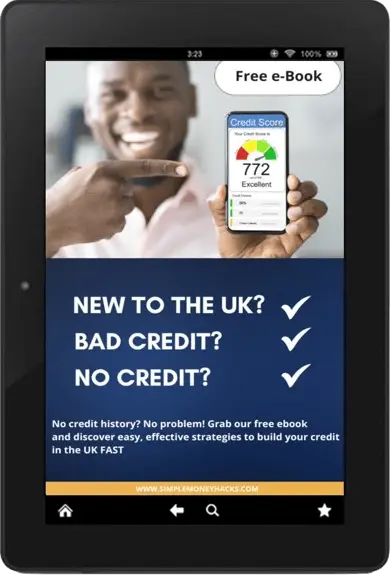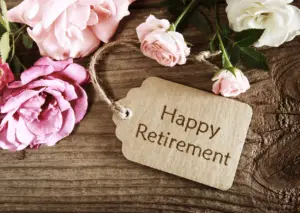Debt. It’s one of those words that can trigger instant stress, especially when it feels like you’re drowning in repayments with no clear way out. Here are 7 proven debt repayment strategies to help you break free. Whether credit cards, personal loans, student debt, or store cards, the weight of what you owe can hold you back from reaching financial freedom.
(This blog is part 5 of my Wealth Wellness series, discussing practical steps to achieve financial freedom. You can find them here if you haven’t checked out the previous posts.)
Getting out of debt is possible—and you don’t need to win the lottery or earn six figures to do it. You just need a solid plan, a bit of discipline, and the right strategies to help you get rid of crippling debt for good.
I know this because I’ve been there. A few years ago, I was buried under £40,000 of debt on a salary of just £21,000 as a single mother of two. I had four credit cards and a personal loan, with my highest credit card interest at 27% on my Barclaycard. The rest weren’t much better. Just making the minimum payments was swallowing most of my income, leaving me trapped with no quick way out.
But I refused to stay stuck. I had to face the numbers—and my fears. I found a similar article and decided to take the recommended actions. These strategies helped me break free from debt and can help you, too.
1. Face the Numbers (Yes, All of Them)
Let’s start with a reality check before we get into specific repayment strategies. You need to know exactly how much you owe. Something like the table below. It does need to be fancy. Write something similar using a pen and paper. Understanding your debt in black and white will help you create a realistic plan to clear it.
| Creditor | Balances | Minimum Payment | Interest Rate |
| Credit Card | £900.00 | £18.00 | 27% |
| Personal Loan | £3856.00 | £120.00 | 19% |
| Store Card | £1690.00 | £80.00 | 18% |
Action Steps:
- Write down all your debts, including the balance, interest rate, and minimum monthly payment.
- List them from highest interest rate to lowest.
- Calculate your total debt figure (yes, it might be scary—but this is your starting point!).
I remember this step vividly. It was painful looking at my total debt number, but once I did, I felt empowered. I knew what I was up against, and that meant I could make a plan.
2. The Debt Snowball Method
The Debt Snowball Method is perfect if you need quick wins to stay motivated. It focuses on paying off your smallest debts first while making minimum payments on the rest.
How It Works:
- List your debts from smallest to largest, regardless of interest rate.
- Pay the minimum on all your debts except the smallest one.
- Put every extra penny toward clearing the smallest debt first.
- Once that’s cleared, move on to the next smallest debt, and so on.
Why It Worked for Me:
At first, I chose the Snowball Method because I needed an emotional boost. Seeing one of my credit cards fully paid off motivated me to keep going. In just a few short months, I cleared my smaller debts, which built up my confidence to tackle the bigger ones.
3. The Debt Avalanche Method
The Debt Avalanche Method is for those who want to pay off debt in the most cost-efficient way. This method saves you the most money on interest over time.
How It Works:
- List your debts from highest to lowest interest rate.
- Make minimum payments on all debts except the one with the highest interest rate.
- Throw every extra bit of cash at the debt with the highest interest.
- Once that’s cleared, move to the next highest interest rate.
Why I Switched to This Method:
Once I paid off my lowest-interest credit card, I realised that the bulk of my remaining debt was sitting on high-interest credit cards, costing me a fortune. I switched to the Avalanche Method because it saved me the most money. It took longer to see progress, but the long-term savings were worth it.
4. Debt Consolidation: When It Makes Sense
Debt consolidation is when you combine multiple debts into one loan with a lower interest rate. This can make repayment simpler and cheaper.
Best Options for Debt Consolidation:
- Personal Loans: If you have good credit, you might qualify for a loan with a lower interest rate than your credit cards.
- Debt Management Plans: Some financial organisations offer structured plans to help pay off debts.
When It Works Best:
- You have multiple high-interest debts.
- You qualify for a lower interest rate.
- You’re struggling to keep track of multiple due dates.
What to Watch Out For:
I have seen many people take out a consolidation loan to clear their many credit and store cards, only to use those same cards again, worsening their debt situation. If you’re considering a consolidation loan, be disciplined and avoid falling into this trap:
- Do not use the cards you paid off again.
- Remove your cards from online retail sites to reduce temptation.
- Cut up your cards or leave them at home when going out.
Debt consolidation can be a powerful tool, but only if you commit to staying out of new debt once you’ve consolidated.
5. The Balance Transfer Hack
Consider a balance transfer card if you’re struggling with high-interest credit card debt.
How I Discovered This by Chance:
After paying off my first credit card using the Snowball Method, I received a letter from The Post Office (the credit card company). They congratulated me on clearing my balance and offered me a 0% balance transfer for 24 months. That meant I could move my remaining balances from other credit card companies (like Barclaycard) charging 27% interest to 0% interest!
Within six months, I had transferred all my credit card debts to 0% deals, saving me over £23,000 in interest and cutting down my repayment time by over three years. If you can qualify for a balance transfer, I highly recommend it.
⚠ Key Tip:
- Ensure your credit rating is good enough to qualify for these deals. If it’s not, work on improving it first.
- The good news is that starting with the Snowball Method and paying off a small credit card can instantly improve your credit rating, making you more likely to qualify for balance transfer deals. It worked for me, and it can work for you too.
⚠ Warning:
- Pay off the balance before the promo period ends, or you’ll face high interest rates again.
- Don’t use the card for new purchases—just focus on clearing the debt.
6. Can You Negotiate Lower Interest Rates? (UK-Specific)
Credit card companies typically do not lower interest rates in the UK unless you enter a structured repayment agreement due to financial hardship. This damages your credit score, so it’s not a great option if you can avoid it.
However, you can lower your mortgage interest rate when your current deal ends by remortgaging or switching to a better offer. If you’re paying a high interest rate on your mortgage, it’s worth shopping around for a better deal when your fixed term expires.
The best way to reduce interest for credit cards is to use balance transfers rather than negotiating directly with lenders.
7. Tools, Mindset, & Habits to Beat Debt for Good
Getting out of debt isn’t just about strategy—it’s about having the right mindset, tools, and discipline to stay debt-free.
Essential Tools:
✔ A Budgeting System – The 50/30/20 Rule, zero-based budgeting, or simple spreadsheets work. Download your free budget system here.
✔ A Debt Tracker—A visual reminder (apps, spreadsheets, or even a notebook) keeps you accountable. I used Vertex 42. You can use it, too. Type Vertex 42 Snowball into your browser to access this valuable FREE tool. They even have a YouTube channel. Check it out.
✔ An Emergency Fund—Even £500 stops you from relying on credit for unexpected expenses.
✔ Automatic Payments—Setting up direct debits ensures you never miss a payment or incur late fees.
✔ Side Hustles or Extra Income—More money means faster debt repayment. I took on a lodger and worked towards a raise at work. You may have things you can rent out or sell for extra cash. Keep digging for these hidden gems.
The Right Mindset & Habits:
✔ Commitment – A long-term focus is necessary to see it through.
✔ Delayed Gratification – Learning to say no to impulse spending for future freedom.
✔ Resilience – Setbacks happen, but bouncing back quickly is key.
✔ Accountability – A friend, partner, or community can keep you on track.
✔ A Growth Mindset – Shifting from “I’ll always be in debt” to “I can take control of my finances” makes all the difference.
Final Thoughts: Pick a Strategy & Start Today!
There’s no one-size-fits-all approach to debt repayment. The best strategy is the one that works for you and your situation.
👉 If you need quick motivation, try the Debt Snowball Method.
👉 If you want to save the most money, go for the Debt Avalanche Method.
👉 If high-interest credit cards are killing you, look into Balance transfers.
I know how overwhelming debt can feel—I’ve been there. But with the right strategy and determination, you can break free.
Start today. The sooner you take action, the sooner you’ll be debt-free. If you found this guide helpful, let’s stay connected! Follow me on Instagram for daily money tips and financial hacks:





